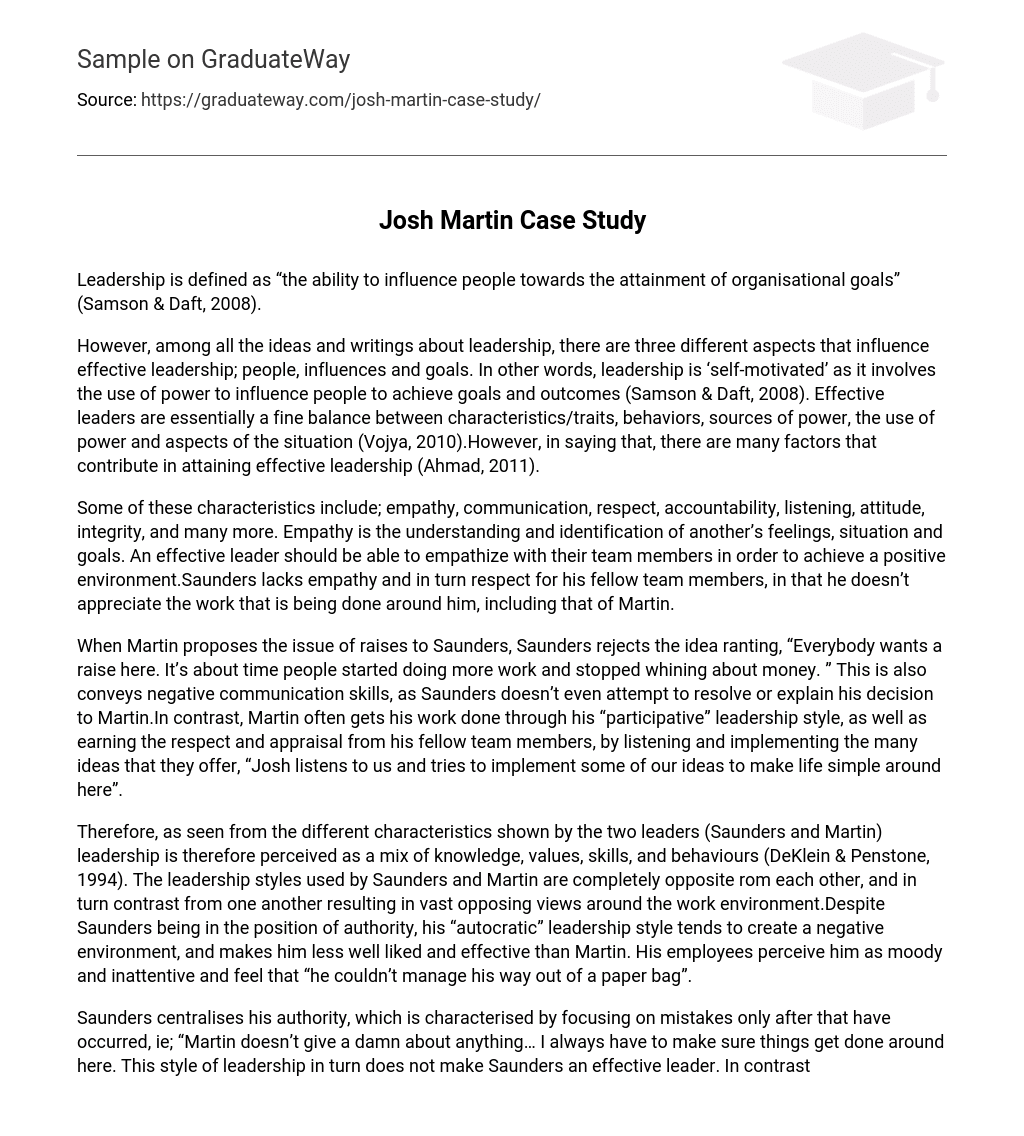According to Samson & Daft (2008), leadership is described as the capability to influence individuals in achieving organizational objectives.
In the domain of leadership, there are various ideas and writings that discuss its effectiveness. Three main factors affecting successful leadership are people, influences, and goals. In simple terms, leadership is using power to inspire individuals towards achieving desired outcomes and objectives (Samson & Daft, 2008). Effective leaders find a delicate balance between their traits/characteristics, behaviors, sources and use of power, and situational factors (Vojya, 2010). However, it should be noted that many factors contribute to achieving effective leadership (Ahmad, 2011).
Empathy, communication, respect, accountability, listening, attitude, integrity, and other qualities are vital for a leader. Empathy is crucial as it entails comprehending and connecting with the emotions, circumstances, and objectives of others. A leader should empathize with their team to foster a positive atmosphere. Sadly Saunders lacks empathy and respect towards his colleagues by not recognizing and appreciating their contributions, including Martin.
When Martin brings up the topic of raises with Saunders, Saunders dismisses the idea by saying, “Everyone here wants a raise. It’s about time people started putting in more effort and stopped complaining about money.” This also demonstrates poor communication skills, as Saunders doesn’t even attempt to resolve or explain his decision to Martin. In contrast, Martin is able to accomplish his tasks through his “participative” leadership style and earns the respect and appreciation of his teammates by actively listening and incorporating their ideas. One team member states, “Josh listens to us and tries to implement some of our ideas to make things easier around here.”
According to DeKlein & Penstone (1994), leadership is perceived as a combination of knowledge, values, skills, and behaviors. The contrasting leadership styles of Saunders and Martin result in opposing views within the work environment. While Saunders, in a position of authority, exhibits an autocratic style that creates a negative atmosphere and diminishes his likability and effectiveness, Martin’s style is different. Employees perceive Saunders as moody, inattentive, and lacking management skills.
Saunders’ leadership style is centered around his authority, which emphasizes on addressing mistakes only after they have happened, for example, he states “Martin doesn’t care about anything… I always have to ensure things are accomplished in this place.” This leadership approach proves ineffective for Saunders. On the contrary, Martin’s democratic leadership style encourages open discussion and idea-sharing among his team members. He attentively listens to the team and communicates their ideas on determining the most suitable action to take.
By employing this leadership style, Martin enables the team to develop a strong sense of belonging, while also making them feel heard and valued. He actively incorporates their ideas to simplify things for everyone (Samson & Daft, n.d.).
The book titled “Management” written by Vojya, M is the 3rd Asia Pacific edition published by Cengage Learning Australia in 2008.
(2010). Characteristics of the Effective Leader. Available at: http://www.targetyou.
com/Articles/LeadershipCharacteristics.pdf. Accessed: 12 May 2011.
Ahmad, S.
According to a source, there are five key qualities that make for effective leadership. The source can be found at the URL: http://ezinearticles.com/?5-Characteristics-of-Effective-Leadership&id=295616.
Accessed on 12 May 2011, Horton, H. W. (2009).
The webpage titled “Thirteen Traits of Effective Leaders” can be found at: http://www.au.af.
mil/au/awc/awcgate/au-24/horton.pdf. Accessed: 12 May 2011





